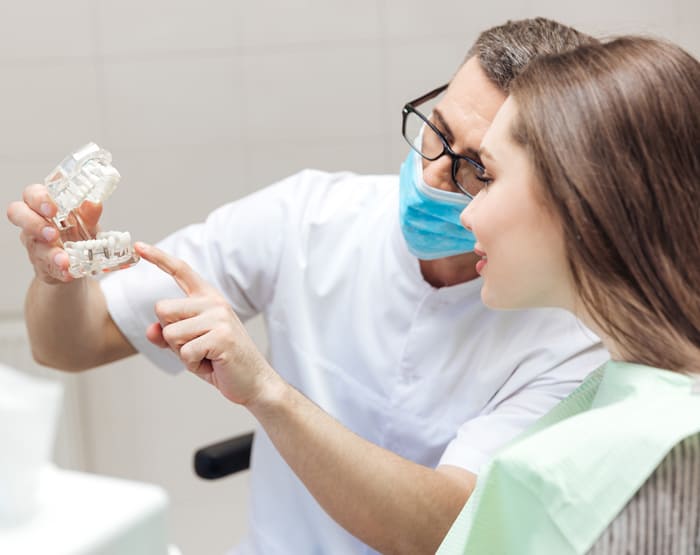Restorative Dentistry Near You
Restorative dentistry refers to the many procedures that are used to restore the patient to original or optimal form and function. It can include a variety of dental restoration procedures such as fillings, veneers, crowns, bridges, full and partial dentures and dental implants. Many of these procedures are considered to be a specialized form of dentistry called prosthodontics.

Replacing Missing Teeth
The goal of prosthodontics is to preserve a patient’s natural teeth as much as possible. However, if this is not possible due to severe decay or infection, there are ways to replace the tooth (or teeth) and preserve the health of the remaining teeth. Dental implants, bridges, and full or partial dentures are all procedures that involve replacing missing teeth. Filling in the gaps left by missing teeth prevents other oral issues, such as cavities, from plaguing the remaining teeth.
Gaps in teeth increase vulnerability and allow an opening for plaque-causing bacteria to build up if left untreated. Missing teeth can cause a myriad of problems such as shifted teeth, uneven growth of teeth, bone mass reduction in the jaw, and added stress on the remaining teeth.
Types of Dental Restoration
There are a variety of different dental restoration options for teeth that are worn, decayed, damaged, missing, or in need of repair. Depending on the nature of the patient’s oral issue, your dentist (or prosthodontist) will suggest and perform one of two types of dental restorations:
- Direct: Direct tooth restorations involve your dentist placing a soft or malleable filling into the prepared tooth. The material is set and hardened, allowing the tooth to be restored within a single visit. Your dentist will choose from a variety of filling options based on the location and severity of the associated filling.
- Indirect: Indirect tooth restoration involves your dentist creating a customized tooth replacement. This can be in the form of crowns, bridges, veneers, dentures, inlays, or onlays. An indirect tooth restoration typically requires multiple clinic visits due to impressions, creation of materials, and placement. Metals such as gold are still used for some inlays, for example, but there are porcelain and tooth-coloured options available for those concerned about having white teeth.
Services
we provide a variety of dental services to our patients





